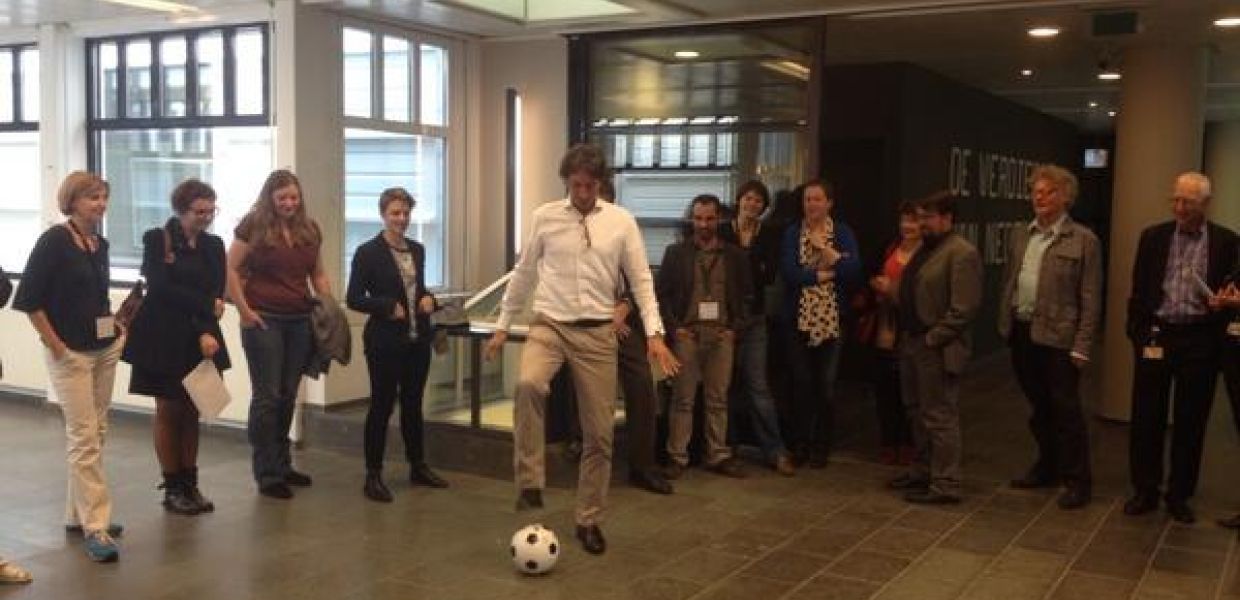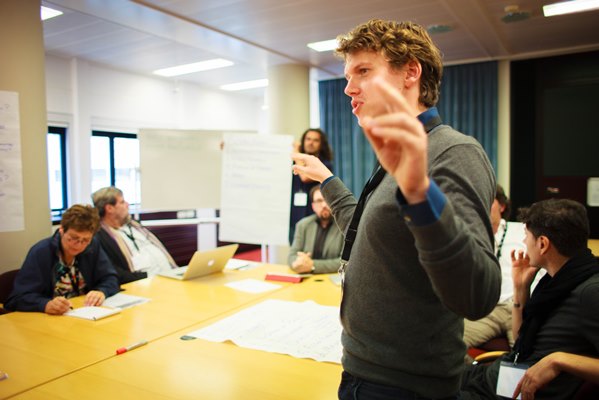Hearing what project coordinators have to say

With 30+ projects going on at any one time involving thousands of people from hundreds of partner organisations across the whole of Europe, not to mention all the activity that goes on at Europeana HQ, it's sometimes hard to get a grasp on exactly who's doing what, where and more importantly, why.
That's why once a year we organise a meeting and invite project coordinators from all the Europeana-related projects. We call this get-together the 'Project Group Assembly'. The idea is that, rather than acting in individual silos, we share what each organisation/project is working on, and discuss how each can support the other as well as where our experiences, views and priorities come together or differ. It's also an opportunity to present useful tools, services and resources and to talk about where and how Europeana should be focusing its attention.

Harry Verwayen shows off his footballing skills during the get-to-know-you ice-breaker game!
The Project Group Assembly 2013 took place on September 25-26 in The Hague with 50 representatives from Europeana and projects attending. Discussions and presentations were wide-ranging, from Europeana's future funding and strategy, working with creative industries and building a cloud infrastructure, to the Europeana Data Model, intellectual property rights, sustainability and engaging audiences. The programme was interspersed with 16 five-minute project updates on topics like Europeana Tech, 89 Voices, Digitising Contemporary Art and Daguerreobase.
So what came out of these discussions? Firstly, the fact that the Europeana Network is an asset; between us, we have created a Europe-wide network that spans all the cultural heritage sectors, it's valuable and we should take advantage of it. Secondly, that Europeana can contribute to the visibility of cultural heritage in the cultural, education, tourism and gaming sectors. The group also saw opportunities and benefits for continued work on the aggregation infrastructure, data models and licensing.

Project Group Assembly in action. Photo by Erwin Verbruggen, CC BY-SA
The overriding message of the two-day event was that we must keep at it! We must work together as a network, support each other, talk to each other and make sure the network remains active and lively. That's how we create something sustainable. That's how we make Europeana an accelerator for the re-use of cultural heritage - a value proposition that will secure all of our futures in the face of funding changes ahead.
Thanks to Europeana Cloud, Europeana Collections 1914-1918, EFG1914, Digitising Contemporary Art, Linked Heritage, AthenaPlus, LoCloud, EAGLE, Europeana Fashion, Europeana Photography, Europeana Newspapers, Daguerreobase,Presto4U, EUScreenXL and PartagePlus for your project presentations!
